You may have been to aquariums, and you may have experienced immersive art through digital projection, but have you ever entered a space in which fuses both of these contrasting elements together? Uniquely differentiating itself from traditional galleries, Art Aquarium is a live art exhibition that features the concepts of living and technology in each and every one of their exhibits. Their selling point, and most compelling component of their exhibition is the usage of living goldfish—known in Japanese as kingyo—as the centerpiece of their artwork. Housed in exquisite vessels and accented with dynamic light projections, the movement of the goldfish is everlasting, making each moment different from which will come before and after, and offering you a singular artistic experience.
Art Aquarium opened its first exhibition in 2007 at Mori Arts Center Gallery, Tokyo and has since held multiple exhibitions across Japan and overseas. Their previous exhibition venues were predominantly made up of historical and cultural monuments, such as Nijo-jo Castle in Kyoto and the 21st Century Museum of Contemporary Art, Kanazawa. Over time, they have expanded their horizons, having held exhibitions in Milan, Italy in 2015 and in Shanghai, China in 2018. Come August of the year 2020, Art Aquarium established its first permanent exhibition and main base in Nihonbashi, and there was absolutely no way that we could miss checking it out in person. So off went our SENPAIs, Priscilla and Charis, to see what it’s all about and share their experience...
Prologue - Entering the Aquarium
Upon entering the aquarium, you will be greeted with the reception desk and a dark interior. Though it may seem intimidating at first glance, the darkness of the exhibition truly enhances the glow of each display within the exhibition, and the beautiful colours of what used to appear like regular goldfish will seem a lot more radiant than ever before. These are Priscilla’s and Charis’ first impressions of the venue—which is not quite a local aquarium nor a regular art exhibition, but rather something that transcends both.
[Priscilla]
For the better part of my life, I’ve only ever seen goldfish as a regular pet, and for a few years I even housed some. Though I found their colours beautiful since I was a child, I never saw them as anything more than that. It was only when I visited Art Aquarium that I saw goldfish in a different light and exhibited in such an ethereal way, making me realize just how beautiful these creatures really are. The first two displays were simple and elegant in themselves, but as you advance further into the exhibition, each artwork becomes more immersive with the glow of the lights and goldfish. Being my first visit, I did my best to go in without any expectations and I think that was the best choice as doing so, you will find yourself in awe until the end.
[Charis]
To me, goldfish always have a stereotypical impression of being a common pet seen in almost every house. However, my visit to Art Aquarium has given me a completely different perspective on these lively creatures-together with the light and the dynamic way of displaying these masterpieces, I realized goldfish are so much more than the unassuming fish I had thought I knew.
My favorite piece in this section has to be “The Show of Kingyo”. This might not be the most eye-catching piece of work, but the simplicity of the design accentuates the beauty of each individual goldfish. I took a bird’s eye view, and you can see that each cylindrical tank is almost like a luxurious piece of pottery, yet at the same time every detail of the artwork teems with life-this is one exhibit that truely made me feel that the “Art is alive”.
Ephemerality - Venturing into the Glittering Oiran District

This section of the exhibition was heavily influenced by hanamachi, the Japanese word to describe the districts in which geisha live and work, as well as the oiran dochu (courtesans’ procession) during the Edo era. Each of the large glass structures with the frilled rims in the middle of the room symbolise the oiran, all of which are situated as though they were in a line formation, thus mimicking the parade. The surrounding objects and decorations consisted of traditional Japanese–inspired glass tanks and architecture, bringing in a dose of old Japan to this modern space. Coupled with the soft-yet-vibrant illumination of each artwork, this is where the exhibition indubitably lures you further into its clutches. Perhaps we will never truly know what Edo-period Japan looked like aside from the depictions seen in mainstream and pop culture media. However, one thing that our SENPAI’s can be sure about is that the fusion of goldfish and traditional Japanese aesthetics makes for a spectacle to be reckoned with.
[Priscilla]
The one thing that truly surprised me was how your entire surroundings completely transformed into traditional Japanese aesthetics. While it was a prevalent theme throughout, it didn’t feel like going through multiple rooms that looked the same. When I entered the area I felt as though there was something to see around every corner, and even after making multiple rounds within the room, I still came across details that I hadn’t immediately noticed before. It didn’t feel like an exhibition at this point, but rather as if I had been transported into old Japan with a modern twist.
[Charis]
Before stepping into the Oiran section of the exhibition, we had to walk through a tunnel with brilliant colors. At first I paid little attention, but shortly after, I noticed the moving shadows from above and realized that in the little square above our heads, the goldfish were swimming freely as if they were apprentice oiran welcoming us to the hanamachi―this too, is a piece of art. I loved how every transition between the zones was so smooth. So much attention was given to the details to complete the whole picture of being in a fantasy world based upon the Edo period.
Mystery - Exploring the Beauty of Nature
Heading into the final section of the main exhibition, you will find yourself stepping into a surreal space that contrasts with the extraordinary Edo-like world. One of the main differences that manifests prevalently at first glance is not only the change in atmosphere, but also the synergy between the goldfish, the universe and projection. Their piece Earthaquarium Japonism is set at the forefront of this concept. The combination of the multimedia and live art was astounding, and it demonstrated a fascinating mix of technology and the living. Much like many other things, Art Aquarium saves one of its true highlights—The Forest of Goldfish—for the very end. This piece in itself is an artistic display of combining the concept of reality and fantasy, aimed to create a realm where you can stroll amongst the colorful pillars of goldfish. Entranced and astounded, this is what Priscilla and Charis had to say:
[Priscilla]
Since this is my first visit to any of the Art Aquarium exhibitions, I honestly had no expectations the whole way through, and I think that was why I was amazed by this final section. The fusion of the unconventional glass tanks and the colourful light projections was astounding since they would change periodically. Each time I took a photo, the entire area would shift, so it really didn’t feel like I was taking pictures of the same place. When the tanks used in The Forest of Goldfish art piece turn into an array of colours, that is the time to snap away, as it can’t get more Instagram-worthy than that.
[Charis]
This section of the exhibition has a completely different vibe to it compared to the previous ones. I was first welcomed by the piece Eathaquarium where carp of larger sizes were swimming in the globe right in the middle, and in tanks around the corner of the platform. This might sound very generic when put in words, but I honestly have never seen fish of this size in my life, and it was a truly astonishing sight.
The Prevalence of Traditional Art
On top of the beautiful Japanese aesthetics displayed throughout the exhibition and artwork themselves, you will inevitably come across the breathtaking Noh theatre on the second level. With a bar to your right, and luxurious seats that are widely spaced out from each other (perfect for social distancing) before your eyes, the setup alone invites you in. If you’re looking for a fancy night out after a hard day’s worth of work, perhaps opt for a drink at the bar and enjoy the atmosphere should you not be able to catch a show. While we were unfortunately unable to enjoy a live performance this time, it’s something that we’ll certainly be looking forward to in our future visits.
Goldfish-Themed Delights
When you think themed food couldn’t get any more fascinating, Art Aquarium sure does come through with their goldfish motif. From themed jelly to full–on goldfish candy complete with googly eyes and cute little smile, your cafe experience will definitely be memorable. During our visit we were consumed with an overwhelming need to try almost everything the menu had to offer, and to no surprise, we ordered every goldfish–themed item. How about we break it down for you?
The Drinks
While there were many interesting drinks that caught our attention, we honestly could not have passed the opportunity to feast our eyes upon this exquisite latte art. Japan is no stranger to meticulously decorated beverages. Still, to be able to capture the detail of the official Art Aquarium logo in the foam of a hot cup of matcha and hojicha latte is pretty impressive.
The Sweets
One would surely not expect jelly within the cream of a roll cake—which too, is designed around a goldfish motif—though that is not to say that it wasn’t appreciated. In fact, this Koi themed roll cake is the most popular item amongst the sweets and is often sold out at the end of every day.
Perhaps the most interesting of all sweets might have been the goldfish jelly parfait. Upon first glance, the highlight of this dessert may be the cute goldfish gummy candy sculpture, except that really is just the beginning. This sweet comes with a syrup clear as water with the very purpose of pouring it over the jelly as a whole. At the end of the pouring, your goldfish gummy companion is successfully moistened and your dessert has now turned into a small bowl filled with a water-looking liquid and a goldfish inhabiting it. Do remember that it is all edible and made out of sugar.
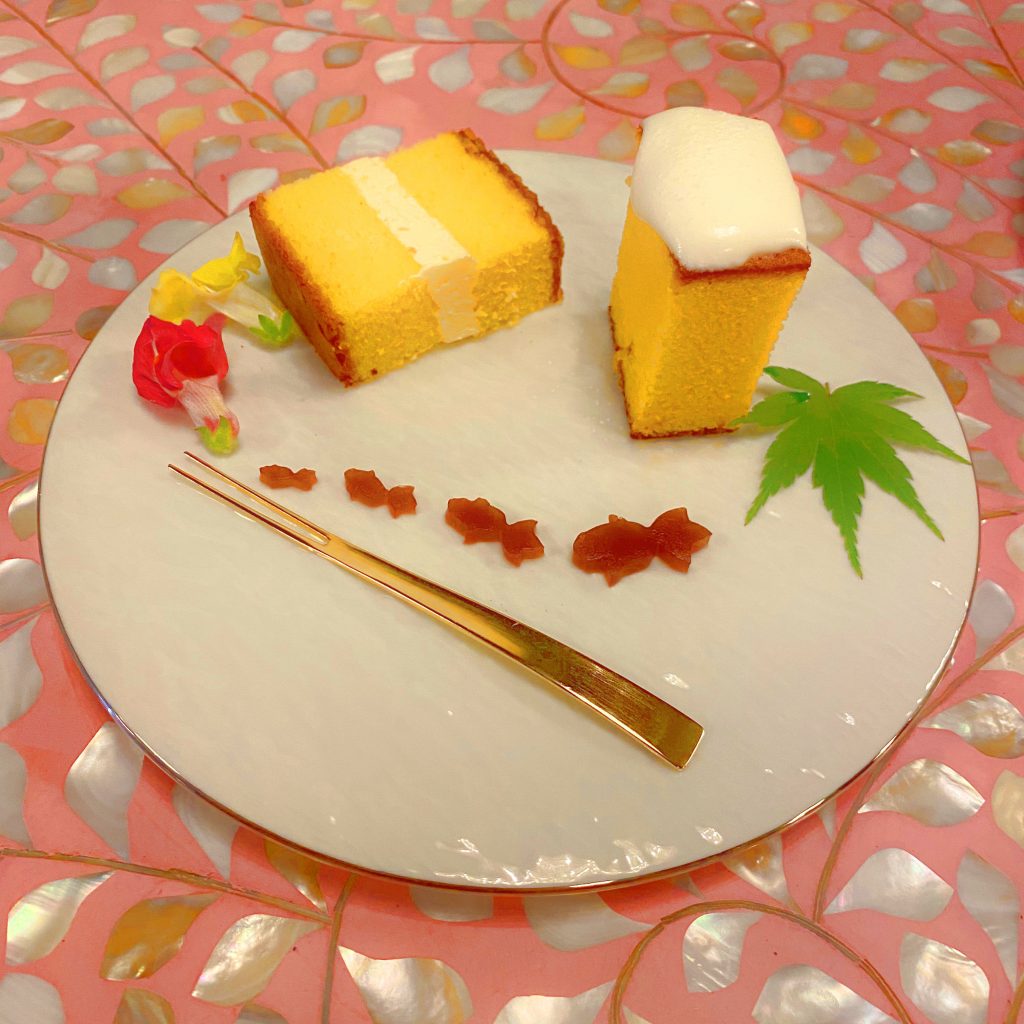
If you can’t find the courage to consume your non-living, gummy candy goldfish after taking plenty of photos to post on your social media accounts, then you can always opt for more traditional offerings such as the fluffy and lightly sweet castella cake.
[Priscilla]
I have a sweet tooth, so it is safe to say that I enjoyed everything! However, I am someone who loves cake a little more than they should, so I’d have to say that I personally enjoyed the roll cake the most. From the goldfish-inspired pattern on the outer layer to the charming touches of the goldfish shaped gelatine encompassed in the filling, it was not only a pleasure to look at but also to eat.
[Charis]
Every dessert and drink were very well presented and delicious. My personal favorite would also be the roll cake. The taste of the cake itself is of course flavorsome, but what I liked most was the sprinkles of icing and matcha powder, which brought out the sweetness and made it more “complete” as a whole. I would absolutely recommend getting a cup of either hojicha or matcha tea to go with your dessert, as the subtle bitterness of the tea is the perfect companion for the sweet dishes.
Overall Thoughts and Feelings
[Priscilla]
I’ve been to a fair few aquariums and art museums in my life, but Art Aquarium is definitely a whole new kind of experience. It’s amazing already that someone would think to merge these two contrasting concepts together, let alone realize it in such impressive fashion, and I think Art Aquarium is a place where art does come alive. The incorporation of traditional Japanese aesthetics in the exhibition is also very unique, and I believe that aspect alone will also be appealing to a variety of audiences. If you’re at all interested in aquariums, art exhibitions, or Japanese traditional aesthetics, then Art Aquarium is more than worth the visit.
[Charis]
I myself have always preferred more Western, aristocratic aesthetics, but the perfect harmony of the light, music and contemporary art has shown me a facet of Japanese traditional beauty I had never known. I believe Art Aquarium will be the perfect entry point for newcomers looking to experience beauty of Japanese art for the first time.


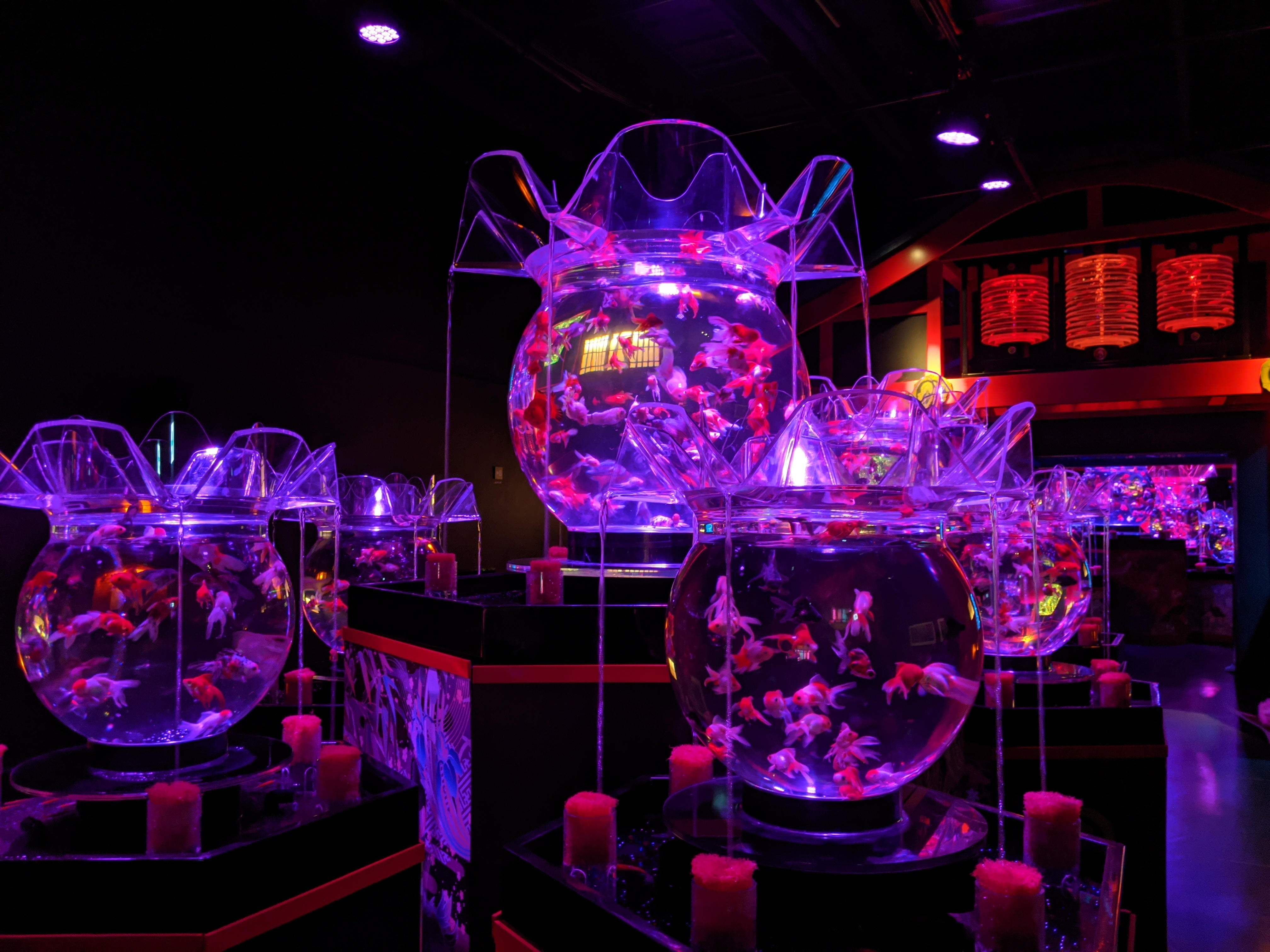
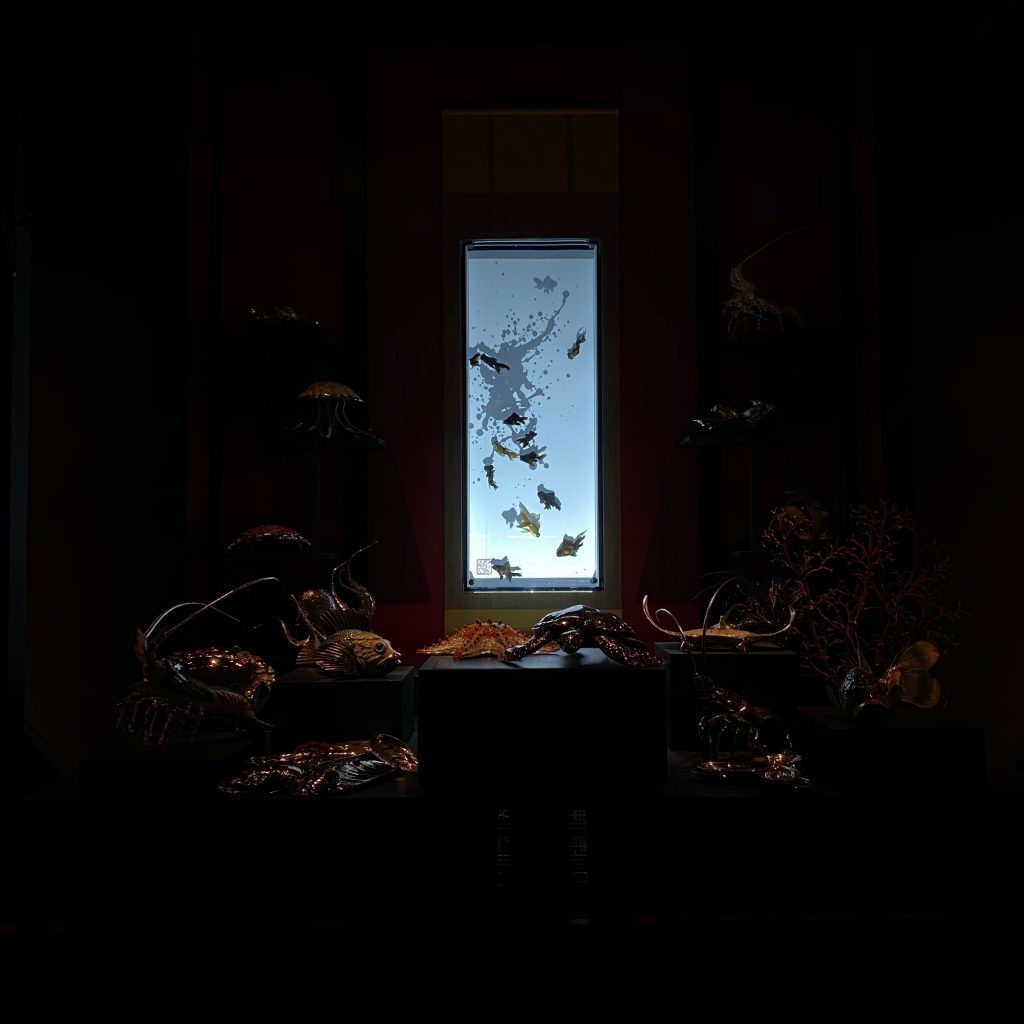
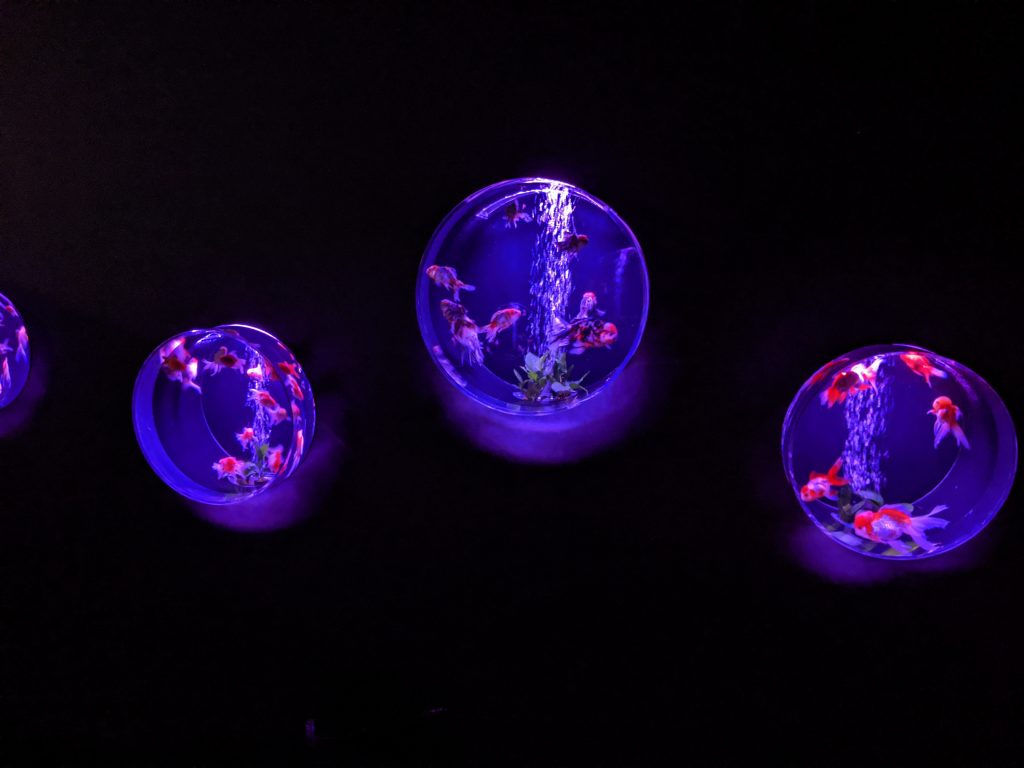
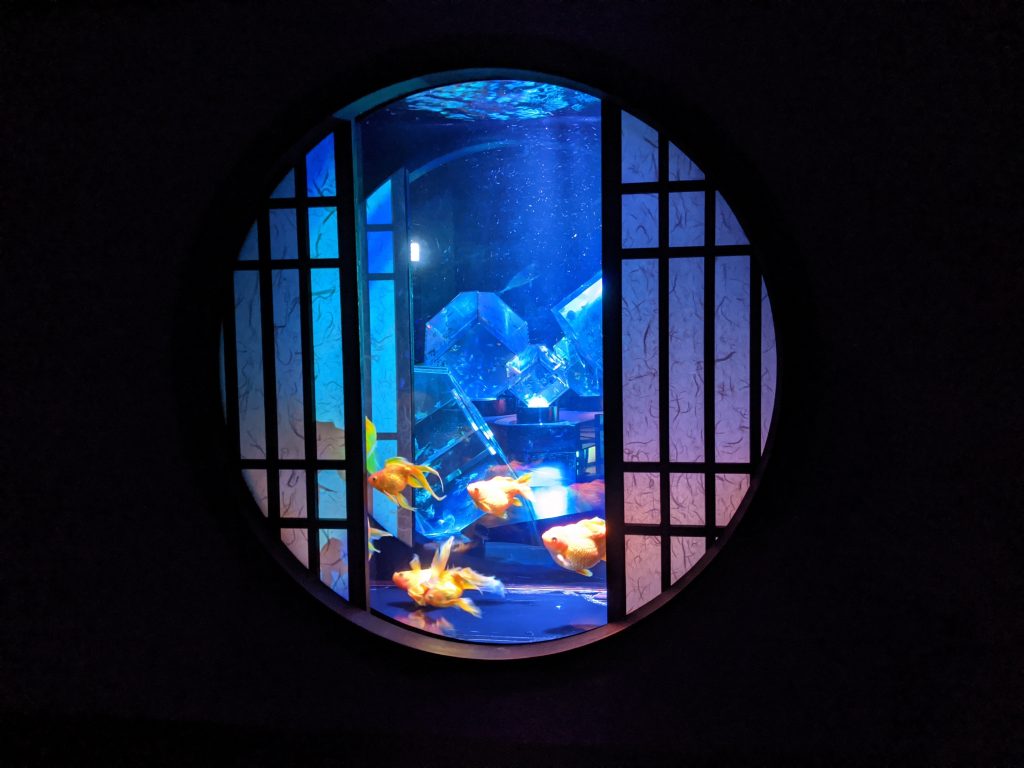
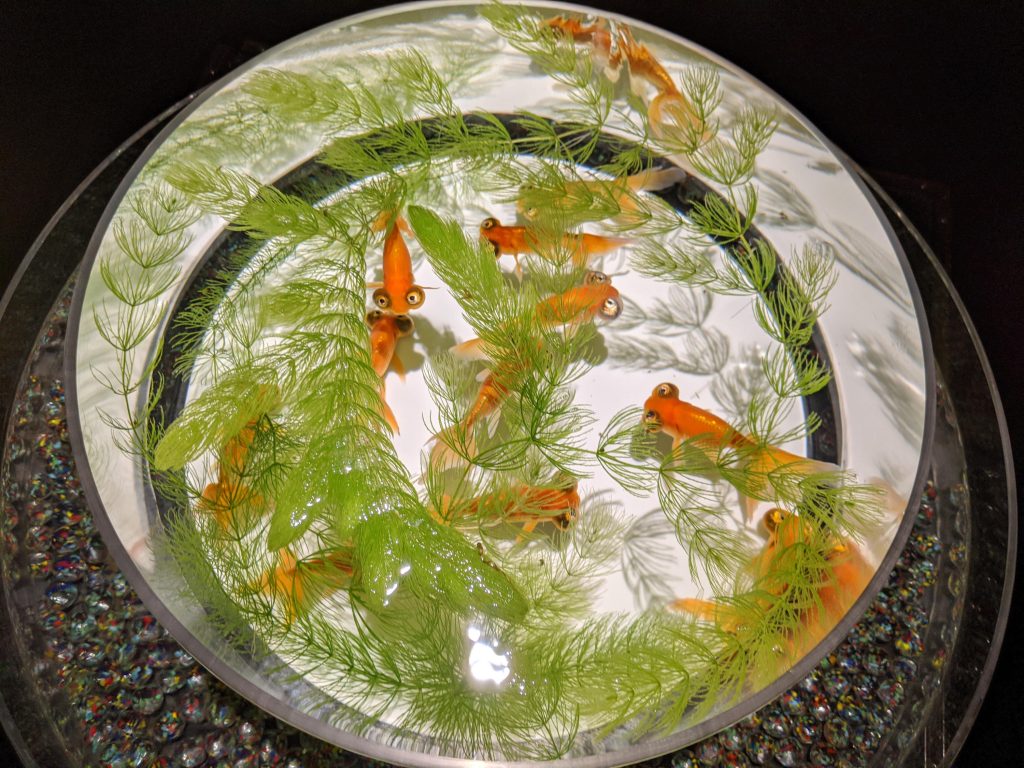

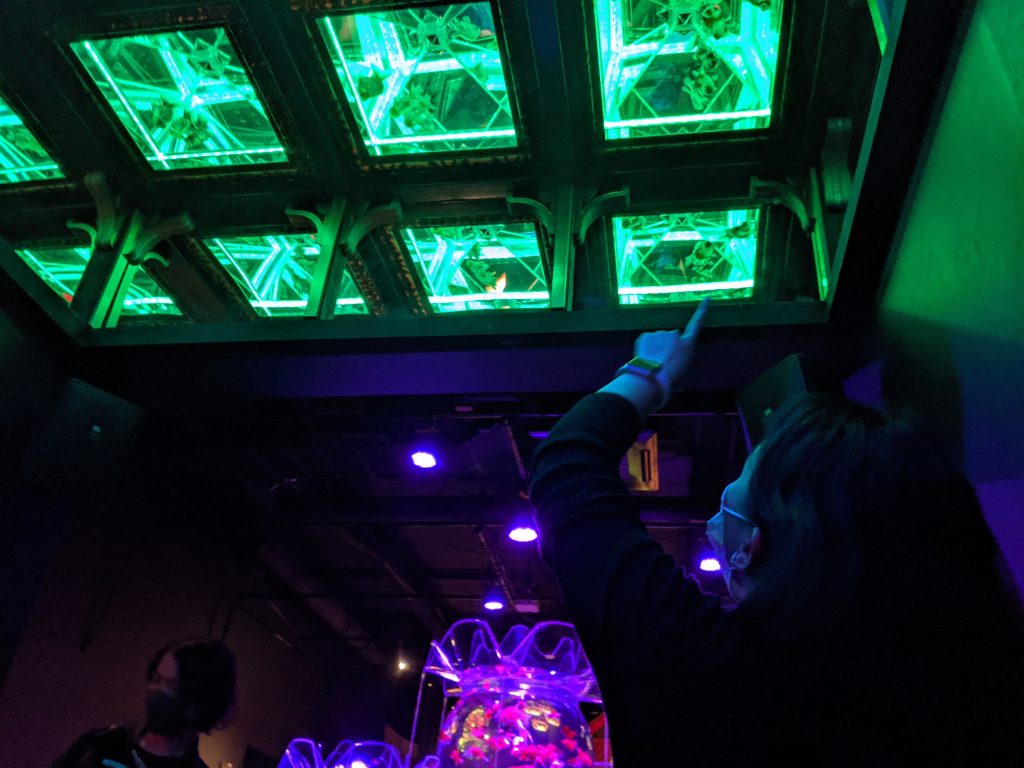
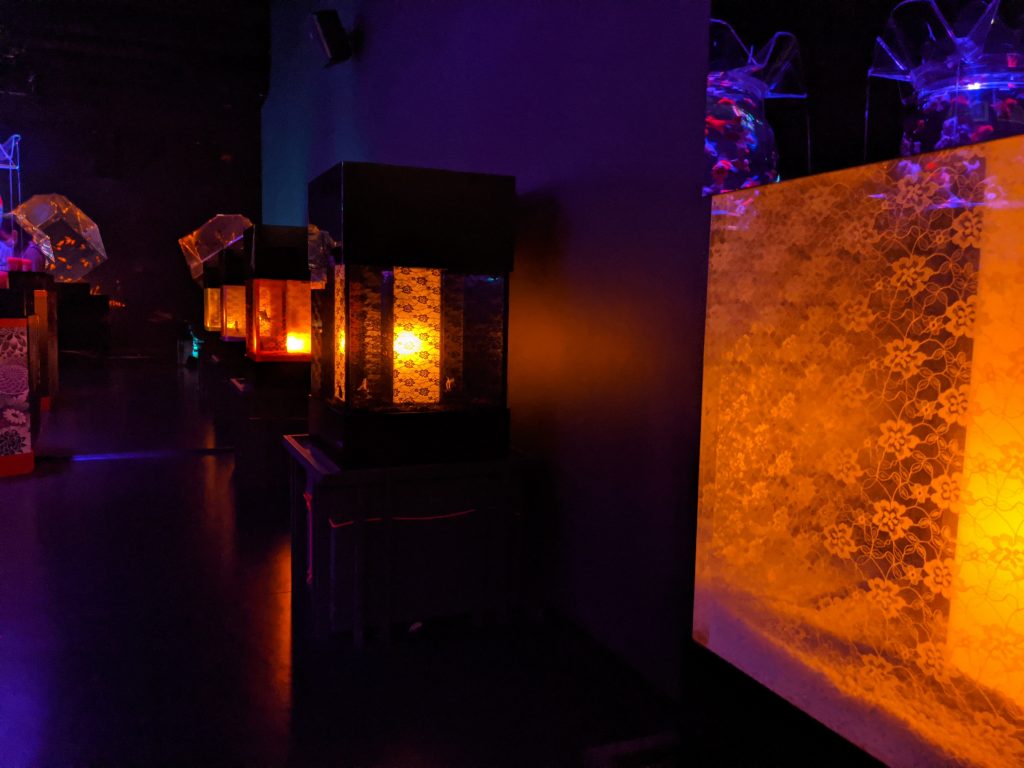
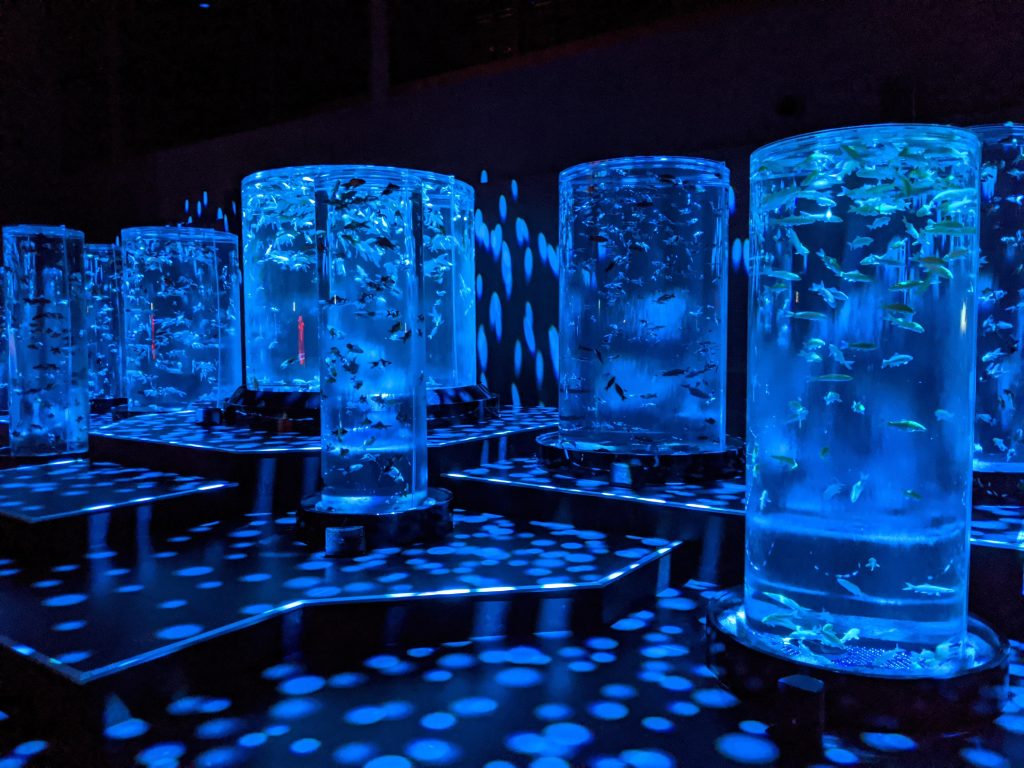
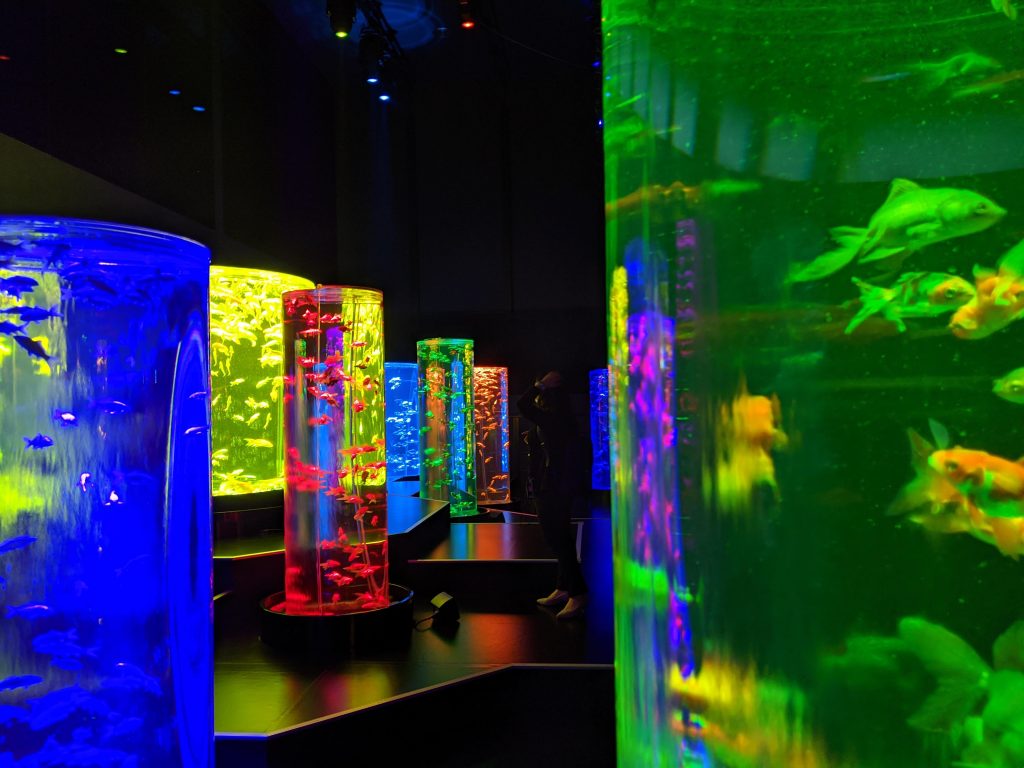
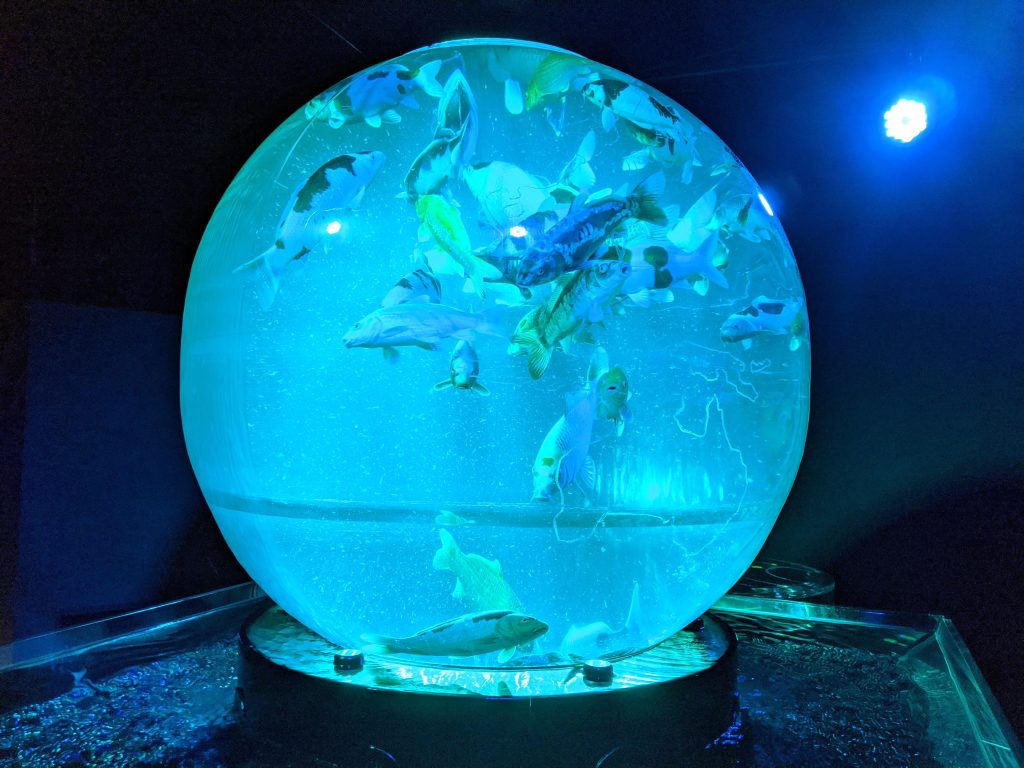
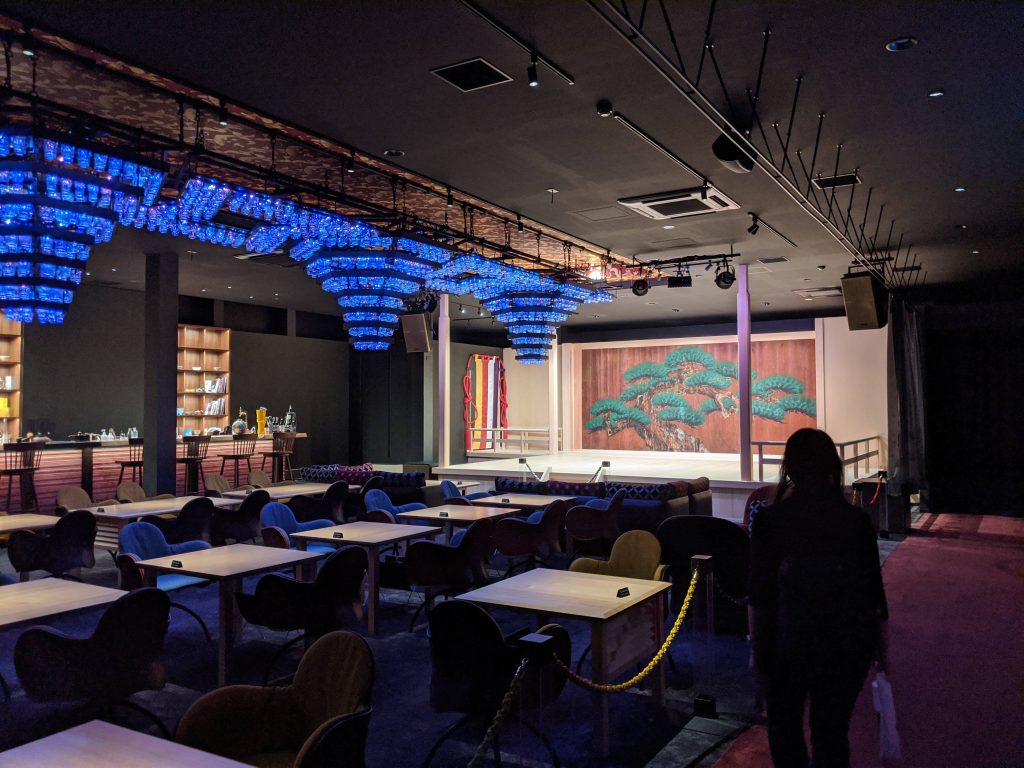
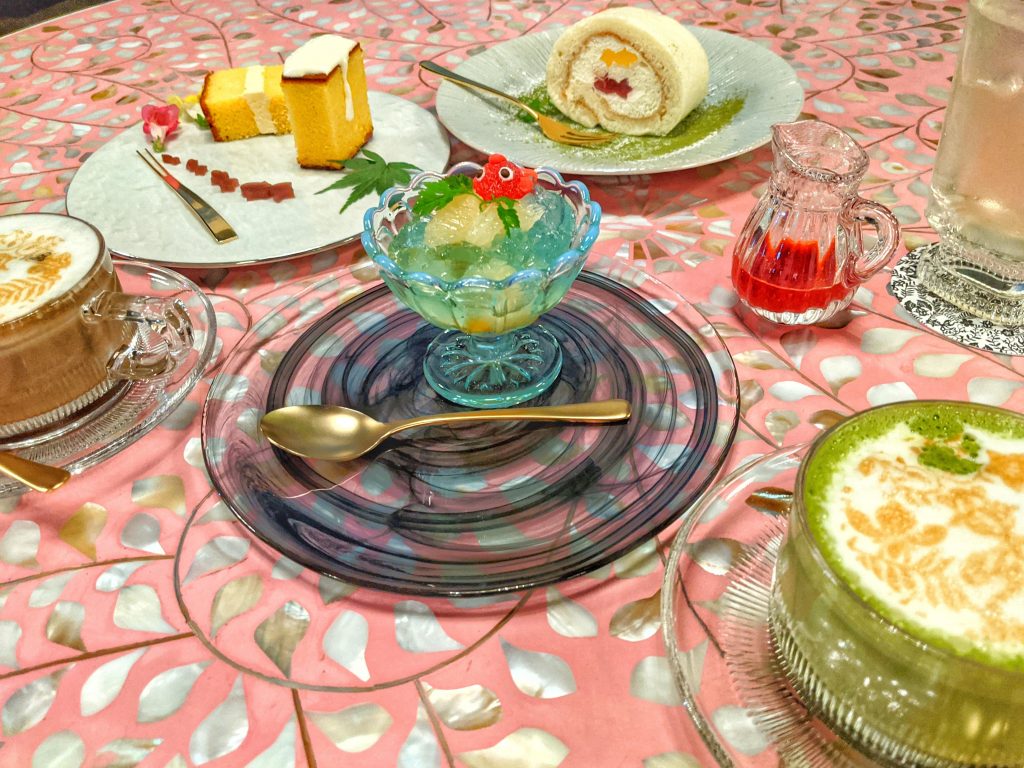
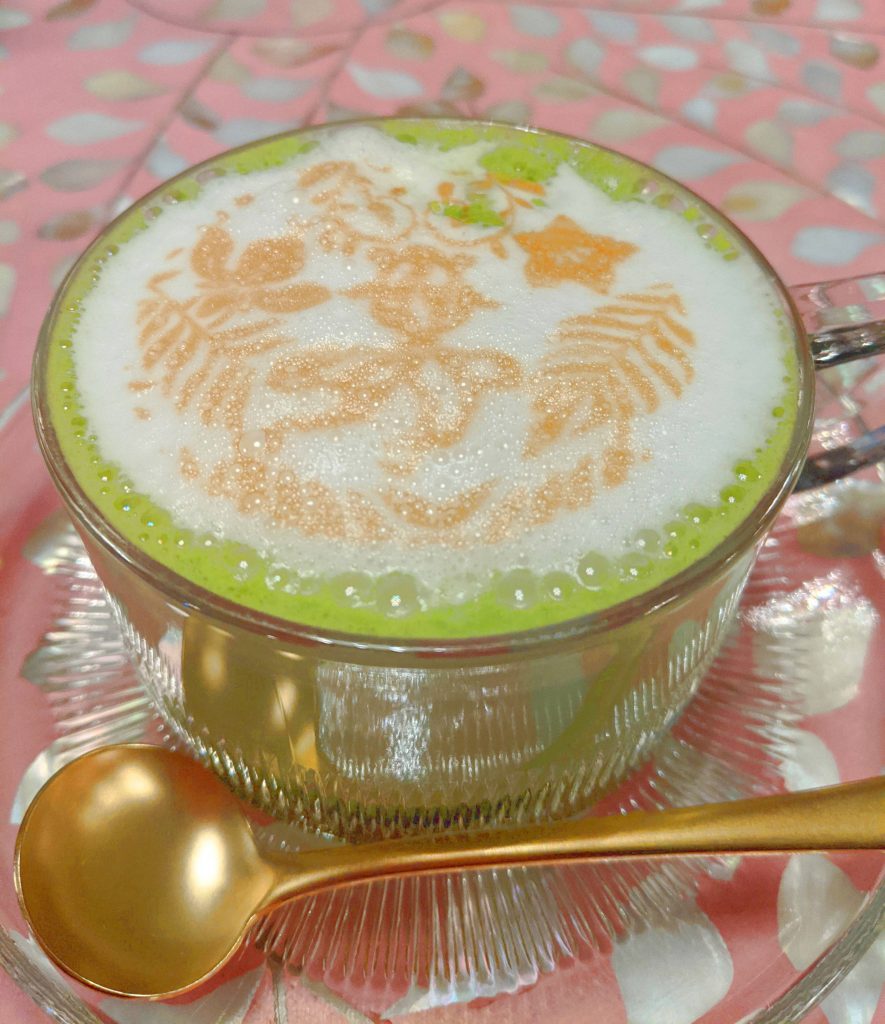
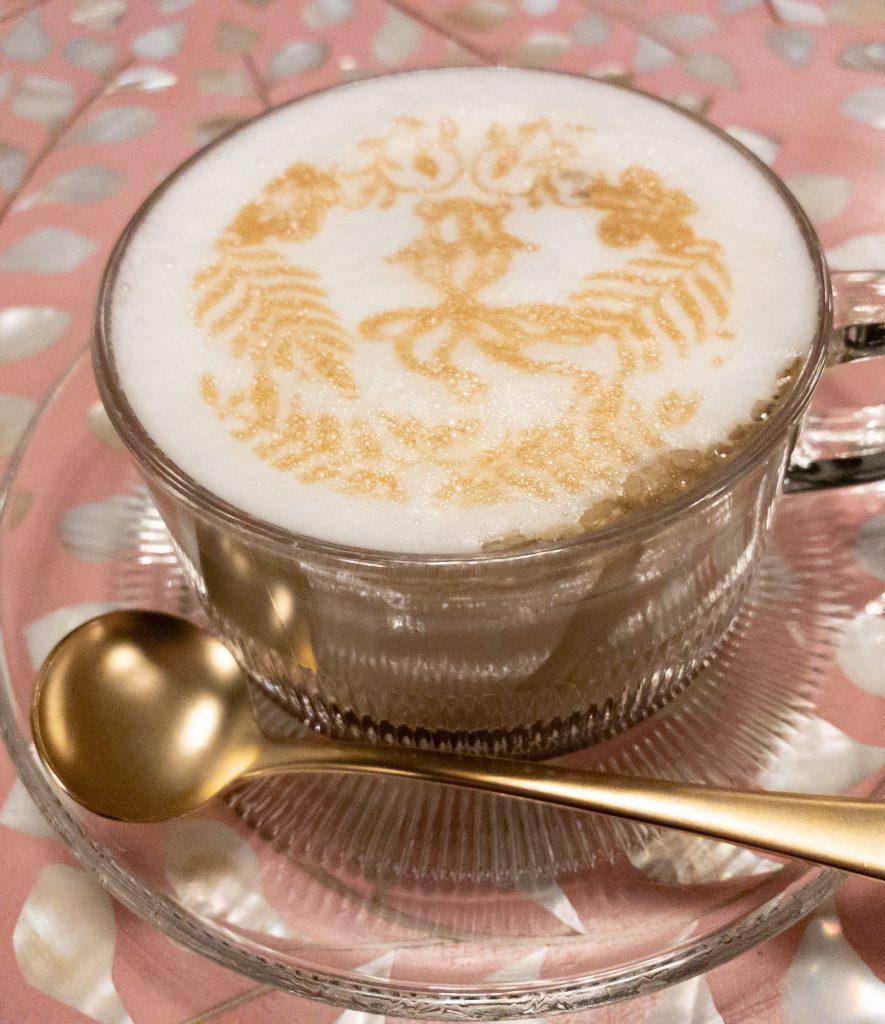
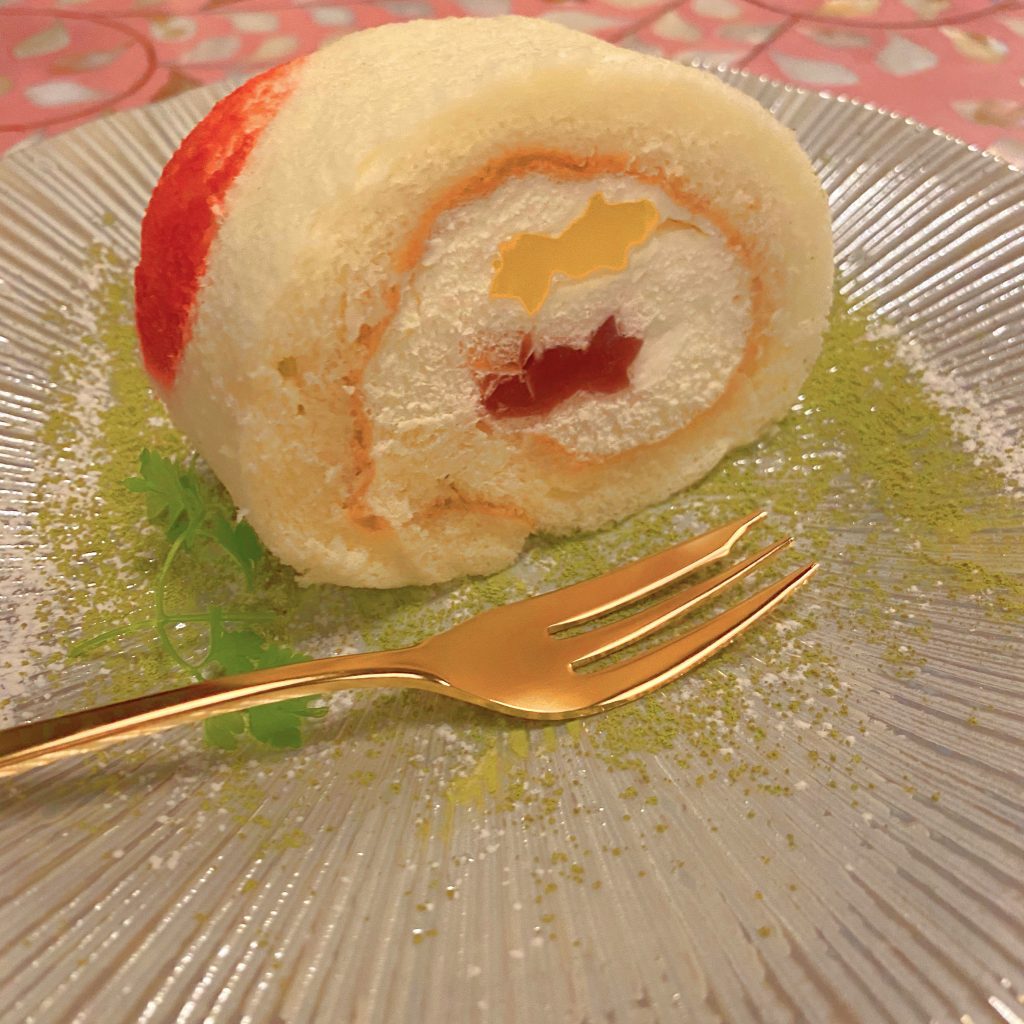
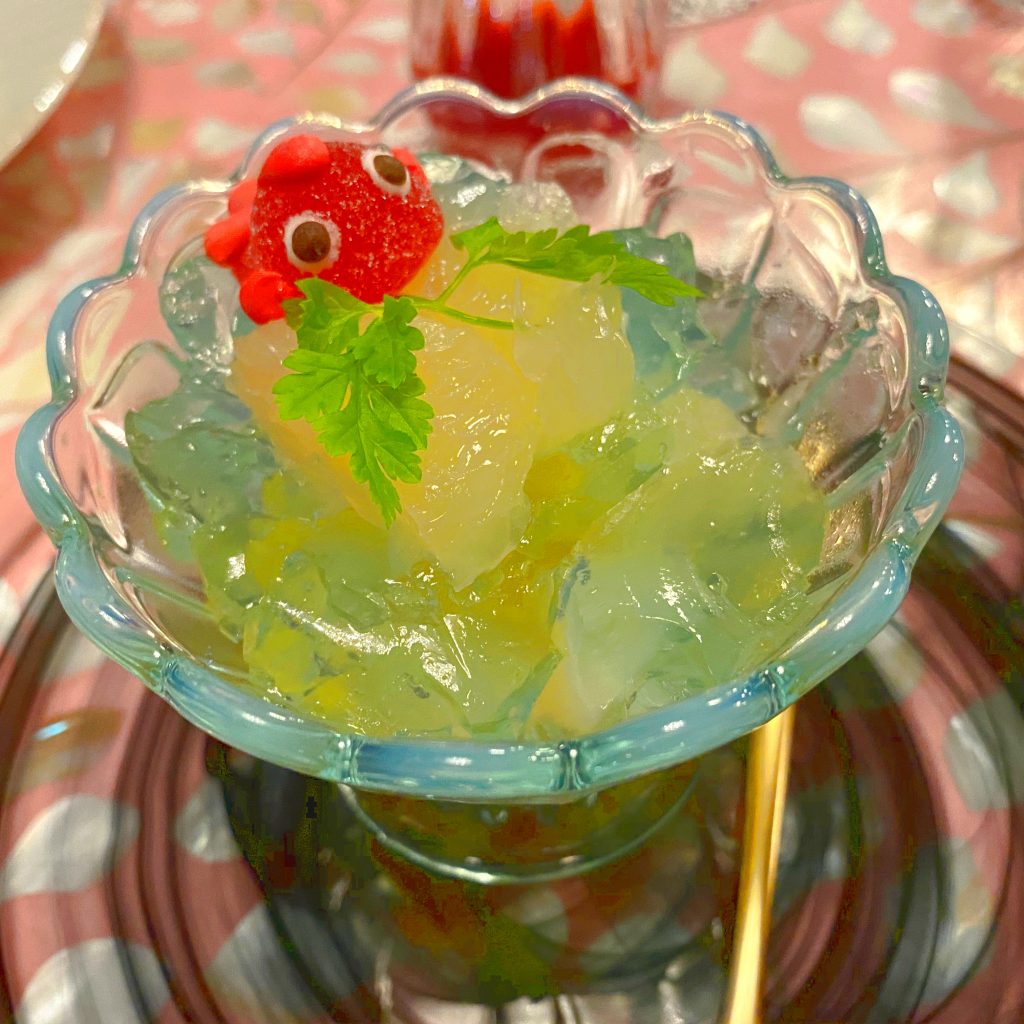

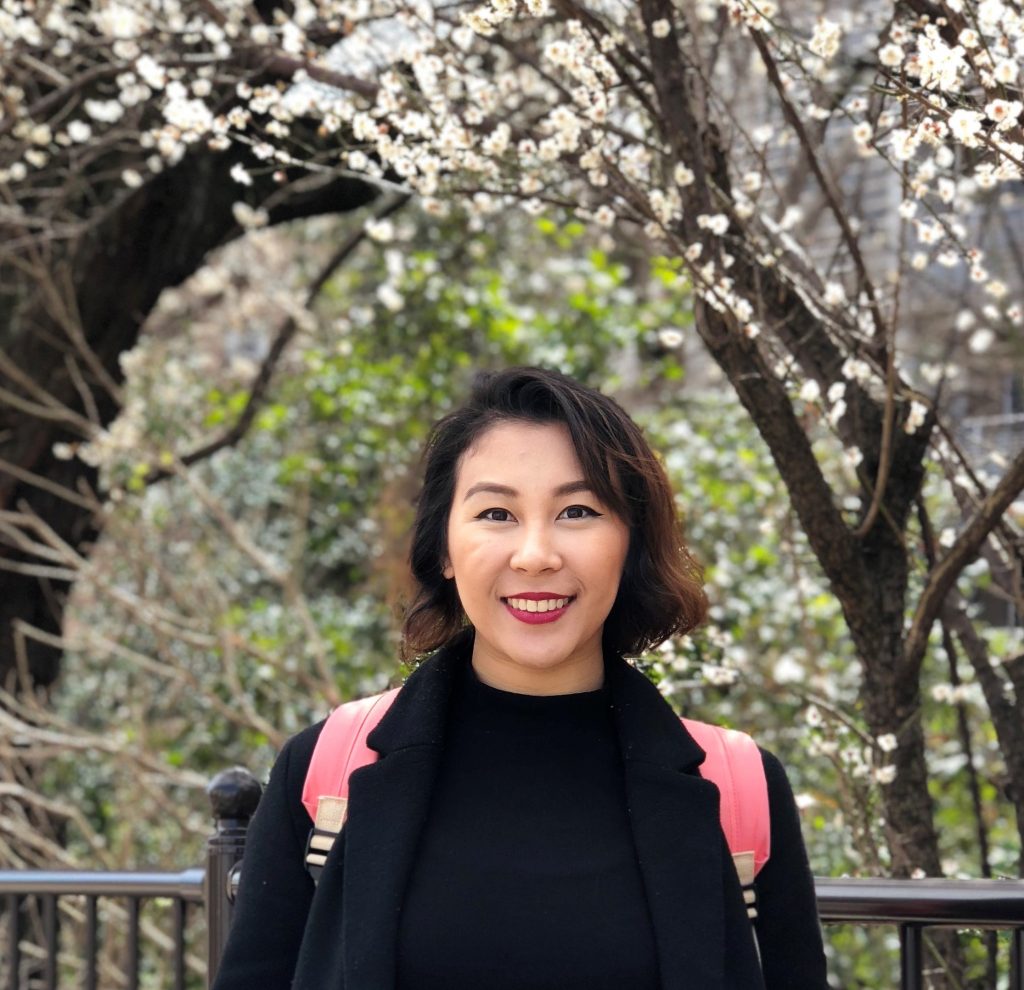
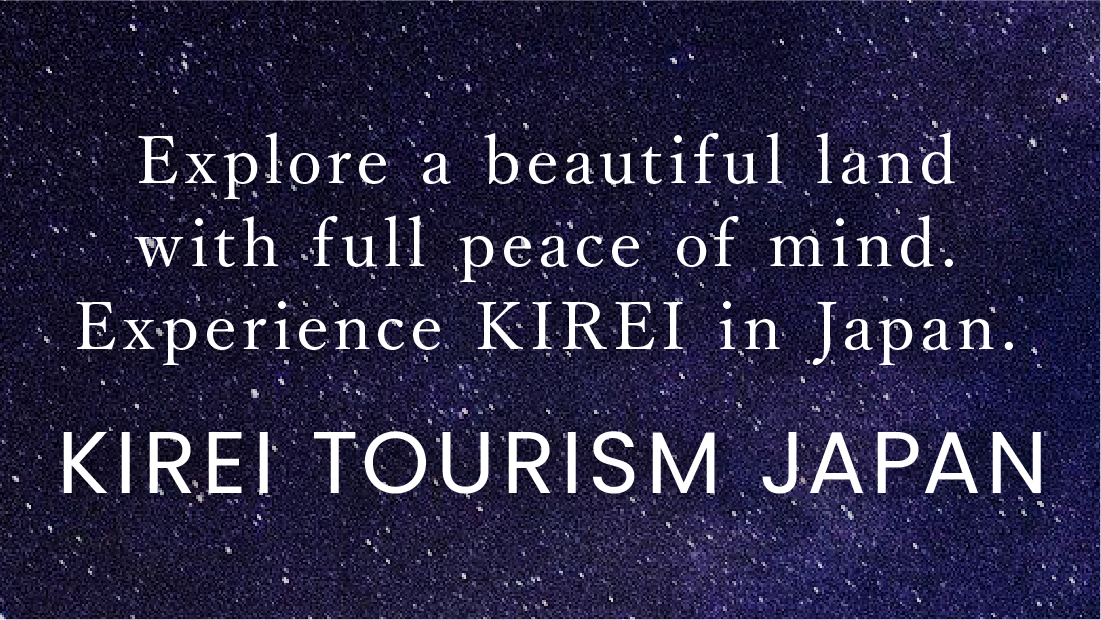
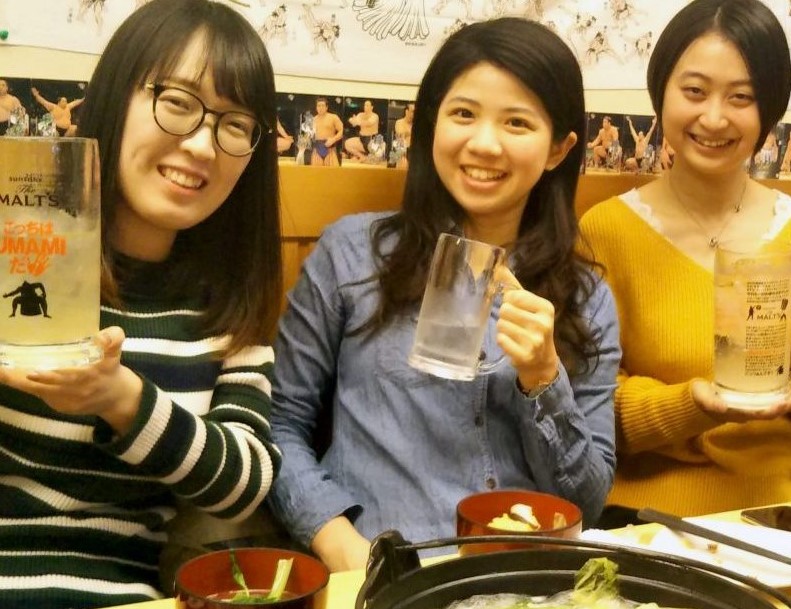

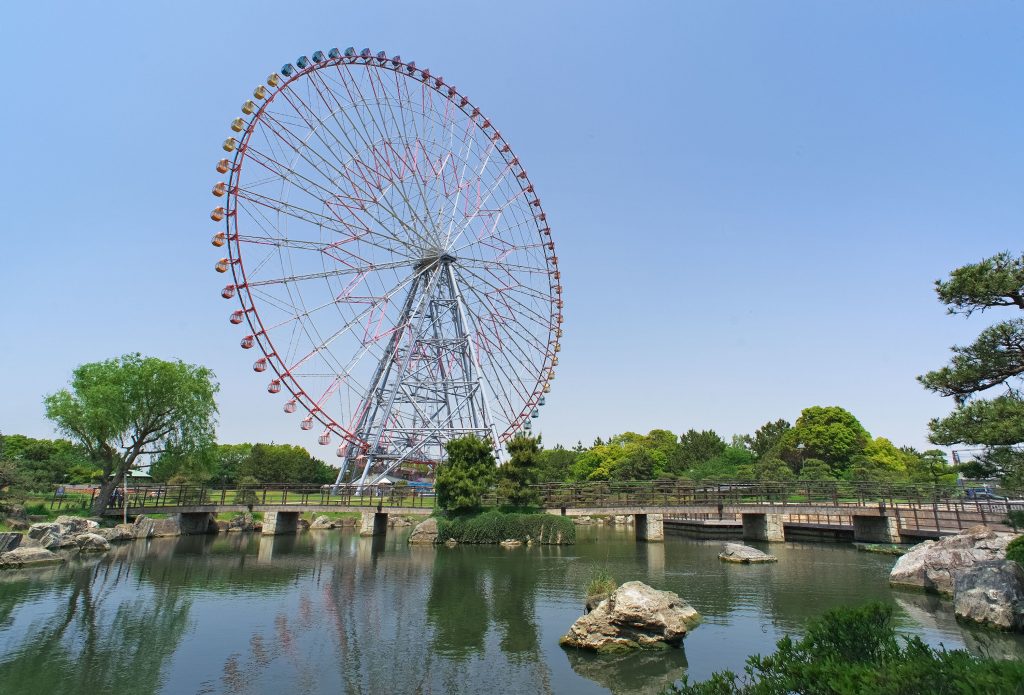
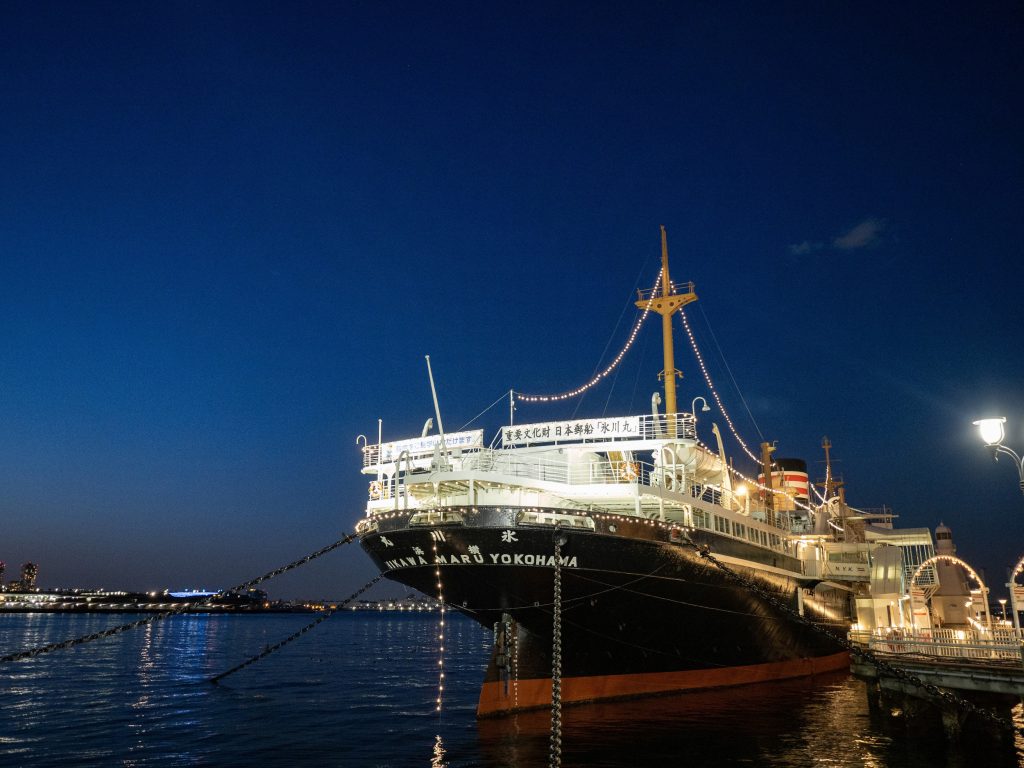
Originally from Australia, Priscilla is a Tokyo based editor that has way too many hobbies. Most of her spare time goes into reading, drinking a lot of coffee and playing Animal Crossing. She sometimes dances and attempts to draw as well.